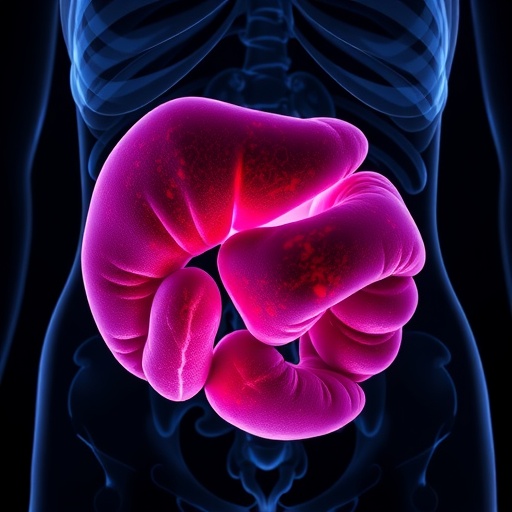In a groundbreaking study, researchers have unveiled the protective effects of obeticholic acid (OCA) against placental injury induced by cyclophosphamide, a chemotherapeutic agent often linked to severe side effects during pregnancy. This revelation has significant implications for maternal-fetal health, as placental integrity is paramount for the healthy development of the fetus. The study explores how OCA leverages key biological pathways, specifically involving SIRT1 and TLR4/NF-κB, to mitigate damage typically inflicted by cyclophosphamide.
Cyclophosphamide is frequently used to treat various cancers but poses risks, especially for pregnant individuals. The consequences of its use include potential placental injury, which can compromise oxygen and nutrient supply to the developing fetus, leading to serious developmental issues. The need for effective protective strategies is magnified in light of the continued prevalence of cancer treatments among pregnant patients.
In their meticulous research, Abdelzaher et al. conducted a series of experiments to evaluate the impact of obeticholic acid on cyclophosphamide-induced placental damage. The findings revealed that OCA not only protected placental structure but also inhibited the inflammatory pathways activated by cyclophosphamide. This crossroad of pharmacology and maternal health ushers in a new paradigm of treatment possibilities, emphasizing the need for tailored therapies that prioritize the well-being of both the mother and fetus.
The study’s authors began by investigating the molecular mechanisms activated during cyclophosphamide administration. They identified an upregulation of inflammatory markers, which indicated a robust activation of the TLR4/NF-κB pathway. This inflammation was shown to be critical in the development of placental injury, confirming the significance of these pathways as targets for intervention. Subsequently, the researchers focused on obeticholic acid and its role in modulating these detrimental responses.
Obeticholic acid is a synthetic bile acid that has garnered attention for its hepatoprotective properties. It acts primarily through the farnesoid X receptor (FXR), influencing various metabolic processes. Applying its therapeutic potential to placental injury represents a significant expansion of OCA’s applicability. The study illustrated that OCA treatment inhibited cyclophosphamide-induced inflammatory responses, highlighting its dual action of fostering placental health and counteracting chemotherapy’s adverse effects.
A pivotal aspect of the research involved examining the expression levels of SIRT1, a protein linked to cellular stress response and longevity. The findings demonstrated that OCA upregulated SIRT1 levels, which in turn exerted protective effects against oxidative stress and inflammation within the placenta. This aspect is especially relevant as oxidative stress is a known contributor to placental dysfunction and fetal growth restrictions, indicating that OCA may serve as a multipronged therapeutic agent.
Interestingly, the crosslink between SIRT1 and TLR4/NF-κB pathways suggests a complex interplay where SIRT1 serves as a negative regulator of NF-κB signaling, thereby minimizing its activation during cyclophosphamide exposure. This interplay emphasizes the intricate balance between inflammatory signaling and protective responses in placental health, shedding light on potential co-targeting strategies for future therapeutic developments.
The implications of these findings stretch beyond mere experimental results; they propose a clinical pathway towards enhancing maternal-fetal outcomes during chemotherapy treatments. Stakeholders in maternal health, including clinicians, researchers, and pharmaceutical developers, are encouraged by these findings to consider OCA in clinical settings involving pregnant patients requiring cancer treatment.
As the scientific community continues to advocate for personalized medicine, the exploration of OCA’s therapeutic profile becomes increasingly relevant. The underlying mechanisms of its efficacy offer insights that could be harnessed in creating protocols that ensure safer environments for pregnant individuals undergoing necessary cancer therapies.
The research also opens questions regarding the long-term effects of using obeticholic acid in pregnancy and its safety profile in human subjects. While preclinical studies provide robust data, human clinical trials remain essential to ascertain the comprehensive safety and efficacy of OCA in the context of placental protection during chemotherapy treatments.
In summary, the study led by Abdelzaher et al. provides compelling evidence that obeticholic acid can serve as a protective agent against cyclophosphamide-induced placental damage through the modulation of critical cellular pathways such as SIRT1 and TLR4/NF-κB. These findings not only add another layer to our understanding of placental biology but also pave the way for future research aimed at integrating this therapeutic approach into clinical practice.
In conclusion, the advent of obeticholic acid as a potential therapeutic agent in preserving placental health during cancer treatment represents a pivotal advancement in maternal-fetal medicine. The interplay of inflammatory and protective pathways, as revealed by this research, sets the stage for innovative interventions that could drastically impact the management of cancer in pregnant populations.
As the knowledge surrounding this research develops, it is crucial for healthcare providers to remain informed and engaged with the evolving landscape of potential treatments that prioritize the dual health of mothers and their developing offspring.
Subject of Research: The protective effects of obeticholic acid against cyclophosphamide-induced placental injury.
Article Title: Obeticholic acid prevents cyclophosphamide-induced placental injury via SIRT1 and TLR4/NF-κB pathways.
Article References:
Abdelzaher, W.Y., Khalaf, H.M., Ahmed, S.M. et al. Obeticholic acid prevents cyclophosphamide-induced placental injury via SIRT1 and TLR4/NF-κB pathways.
BMC Pharmacol Toxicol 26, 156 (2025). https://doi.org/10.1186/s40360-025-00986-0
Image Credits: AI Generated
DOI:
Keywords: Obeticholic acid, placental injury, cyclophosphamide, SIRT1, TLR4/NF-κB, maternal health, fetal development, chemotherapy.




